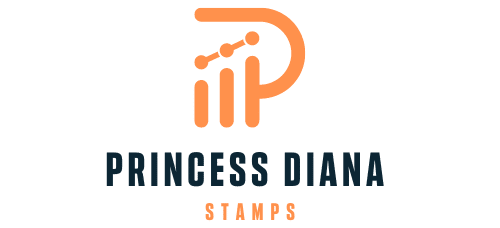What Are the Strategies for UK Educational Apps to Maintain User Engagement?

In our rapidly evolving digital age, educational mobile apps are increasingly becoming a significant tool in the realm of learning and education. The United Kingdom, with its dynamic and innovative tech industry, is at the forefront of this digital revolution in education. However, it’s not enough for app developers to merely create and release these educational apps. It’s critical to ensure that users remain engaged with the app over time. How can they accomplish this? This article will delve into the various strategies that UK-based educational app developers can employ to maintain and increase user engagement.
Incorporating Gamification Features
A key aspect of user engagement and retention in mobile apps is the incorporation of gamification features. Gamification involves applying game-design elements and game principles in non-gaming contexts, such as learning and education. Research has shown that gamification can improve user engagement, participation, and loyalty.
Cela peut vous intéresser : How to Optimize the Energy Efficiency of a UK Data Centre Using Machine Learning?
For educational apps, gamification can transform potentially mundane learning content into an interactive and fun experience, thereby increasing the likelihood of users spending more time on the app. Features can include things like quizzes, leaderboards, achievement badges, and progress tracking. These engage the user, providing incentive and motivation to continue learning through the app.
In developing these features, app developers must ensure that they align with the educational goals of the app. For instance, achievement badges could be linked to mastering specific educational content. The key is to balance the elements of fun and learning so that users stay engaged while still gaining educational benefit.
A lire également : How to Implement a Digital Nomad Policy in a UK-Based Tech Company?
Utilising Push Notifications
Push notifications are a powerful tool for maintaining user engagement. They serve as proactive prompts for users to interact with the app. Research has demonstrated that push notifications can significantly increase user engagement and retention rates.
In the context of educational apps, push notifications can be used to remind users of learning goals, updates in the app, new educational content, or even motivational messages. They can also be personalised based on user data to cater to the individual’s learning needs.
However, it’s important to strike a balance when it comes to push notifications. Too many can overwhelm and annoy the user, leading to lower engagement or even app abandonment. It’s important to find the right frequency and timing that suits your user’s preferences and behaviours.
Offering High-Quality and Relevant Content
The quality and relevance of content are crucial in maintaining user engagement with educational apps. Users will likely spend more time on an app that offers valuable content that aligns with their learning goals and interests.
App developers should frequently update their content to keep it fresh and relevant. This could involve including current affairs, trending topics, or new educational research. The use of multimedia elements such as videos, images, and infographics can also enhance the learning experience, making it more engaging and interactive.
Additionally, allowing users to customise their learning content can also increase engagement. This could involve letting users choose the topics they’re interested in or the level of difficulty that suits their learning needs. By tailoring the learning experience to the individual, users are more likely to stay engaged with the app.
Leveraging User Data for Personalisation
User data can provide valuable insights into user behaviour and preferences, which can be leveraged to personalise the app experience, thereby increasing engagement. This could involve analysing data on how users interact with the app, the time they spend on different sections, their progress and performance, among other things.
By understanding these user behaviours, app developers can personalise the learning experience. This could involve recommending content based on the user’s interests or learning style, tailoring the difficulty level based on the user’s performance, or suggesting learning goals based on the user’s progress.
However, it’s important for app developers to be transparent about their data collection and usage practices. Users should be informed about how their data is being used and have the option to opt-out if they wish.
Encouraging Social Engagement
Social engagement is another powerful strategy to maintain user engagement. Incorporating social features into the app can create a sense of community among users, which can motivate and encourage continued use of the app.
Features could include forums for users to discuss the learning content, share their progress, or exchange tips and strategies. Leaderboards can also foster a sense of competition among users, providing motivation to engage with the app.
Moreover, allowing users to share their progress or achievements on their social media platforms can also increase engagement. This not only motivates the user but also provides the app with potential exposure to a wider audience.
In conclusion, maintaining user engagement with educational apps involves a combination of effective strategies and features. By incorporating gamification, using push notifications wisely, providing high-quality and relevant content, leveraging user data for personalisation, and encouraging social engagement, educational apps can foster a loyal and engaged user base.
Using Analytics to Drive Engagement
A core aspect that pertains to educational app development is the analytics. Understanding user behaviour through detailed data analysis is pivotal to offering a tailored approach in the learning journey. Analytics can track key metrics such as user activity, app session times, frequency of app use, content interactions and progress made in the app.
By employing analytics, developers can understand which features of the app are most engaging for users, how frequently they are using the app, and which areas need improvement. This valuable data can guide developers in making informed decisions about future updates and improvements.
For instance, if the data shows that users are not completing the in-app quizzes, developers could investigate why this is happening. It could be due to the difficulty level of the questions, or perhaps, the quizzes are too long. Once the issue is identified, developers can then make the necessary adjustments to enhance the user experience.
Moreover, analytics can enable developers to identify trends and patterns in user behaviour. This can be particularly useful for segmenting users and understanding their individual learning styles and needs. By understanding these nuances, developers can personalise the learning experience, which is a key factor in maintaining user engagement.
Facilitating Seamless User Experience
In the realm of educational apps, ensuring a consistent and smooth user experience is crucial for long-term engagement. The app interface should be user-friendly and intuitive, eliminating any potential hurdles in the user’s learning journey.
A clean and organised app design can greatly enhance the user experience. Users should be able to easily navigate through the app and access the learning content without any issues. Any form of complicated designs or functionality can deter users, leading to lower engagement rates.
Moreover, providing clear instructions and support for users can also improve the user experience. For example, if the app has complex features, providing in-app tutorials can be beneficial.
Lastly, the app should work seamlessly across various devices and operating systems. If the app crashes or has performance issues, it’s likely that users will abandon the app. Therefore, regular testing and updates are needed to ensure the app functions optimally.
In Conclusion
In the realm of educational apps, maintaining user engagement is a multifaceted task that involves a deep understanding of the target audience‘s needs, interests, and learning styles. By incorporating gamification, sending appropriate push notifications, offering high-quality and relevant content, leveraging user data for personalisation, encouraging social engagement, utilising analytics, and facilitating a seamless user experience, developers can keep users hooked to their apps.
However, these strategies should not be viewed in isolation. They should be integrated holistically in every phase of the app development process. From the design stage to post-launch updates, every aspect should be designed with the aim of providing an engaging, interactive, and valuable learning experience for the users. Finally, it’s essential for developers to track their metrics, receive user feedback, and continually adjust and improve their engagement strategies. By doing so, educational apps can not only retain their users but also thrive in the competitive app store environment.
